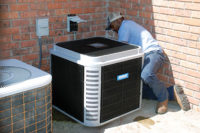Ongoing industrialization and food retail modernization efforts in many of the world’s developing countries, such as China and India, will help grow the global commercial refrigeration equipment market to $38 billion in 2018.
According to the report, World Commercial Refrigeration Equipment — which forecasts for 2018 and 2023 by commercial refrigeration product, across 21 countries worldwide — recovering economic conditions will drive demand, given that purchases of commercial refrigeration equipment were postponed through much of the 2003-2008 period due to the global economic downturn.
Keep the Change
Changes in refrigerant and efficiency regulations are anticipated to drive sales of commercial refrigeration equipment in most of the world’s markets. This is particularly important in the developed world as certain refrigerants are phased out and commercial settings look to reduce their power usage. For instance, in Western Europe and the U.S., the gradual ban on fluorocarbon-based refrigerants that have high ozone-depleting potential will force many consumers to purchase new equipment optimized for more environmentally benign refrigerants.
Among the primary commercial refrigeration products, reach-in and walk-in refrigerators and freezers are forecast to grow in demand the quickest through the period. These products benefit primarily from their utilization in nearly all parts of the food and beverage industry. Demand for commercial refrigeration parts will fuel such robust gains.
Advances will be spurred in developed countries by the retrofitting of current equipment to be more energy efficient. Developing areas will be through existing stock maintenance. China will continue to be the world’s fastest-growing market for commercial refrigeration equipment, driven by the continued development of its food and beverage industry.
This includes products used in food retail and foodservice applications, food production, and food distribution settings as China invests in an established cold chain to decrease the amount of food spoiled during distribution.
India and many of the world’s other developing countries are also prioritizing cold-chain development through construction of warehouses and other facilities for freezing or chilling food awaiting transport.
The demand for fresh food products and rising interest in imported foods and modern processed foods has increased alongside heightened standards of living and a burgeoning middle class.
Still, market penetration for commercial refrigeration products remains low in these areas, indicating significant room for growth going forward.
Although increasing at rates below the global average, demand gains in developed nations will play an important role in overall market advances. This is particularly true in the U.S., the largest national market for commercial refrigeration equipment.
The U.S. is home to one of the most expansive food service and food retail industries. In addition, U.S. consumers have an increasingly sophisticated palate, and demand for specialty food products — such as organic foods and imported products — that will raise the number of items stored on refrigerated shelves, supporting demand gains. The study also considers market environment factors, evaluates company market share, and profiles global industry competitors. Read the full report at http://bit.ly/CommRef38B.
Content for the European Spotlight is provided courtesy of Refrigeration and Air Conditioning Magazine, London. For more information, visit www.racplus.com.
Publication date: 4/6/2015



